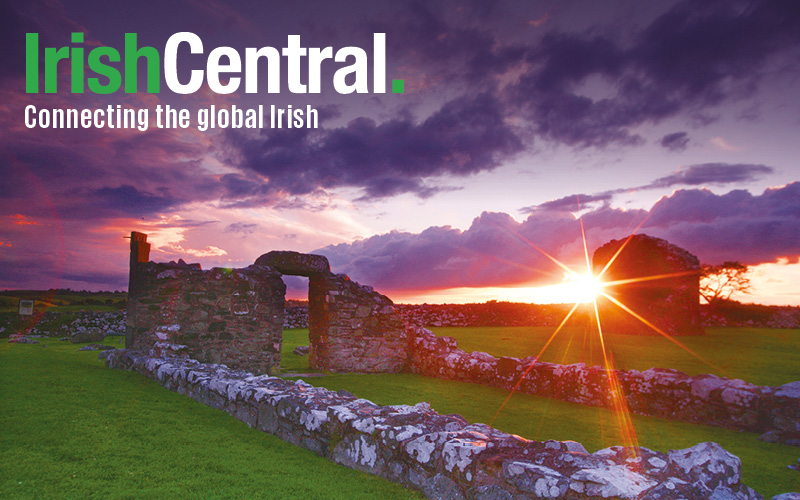This past weekend marked the 174th anniversary of The Night of the Big Wind, the worst storm in Irish history. Here’s a rundown of the worst storms to hit Ireland through the centuries.
1. The Night of the Big Wind - 1839
One of the worst storms in Irish history took place on January 5th, 1839, when heavy snow fell throughout Ireland. In Irish history it’s known as the 'Night of the Big Wind' or 'Oiche na Gaoithe Moire.'
This storm developed in the mid-Atlantic region early on January 6th 1839 but really intensified as its associated depression moved up along the NW coast later in the night, bringing death and destruction to the whole island, Irish Weather Online states.
Up to 300 people died in Ireland and tens of thousands were left homeless as winds reached well over 115 miles per hour, in a category three hurricane. Twenty-five percent of the houses in Dublin were destroyed and 42 ships were sunk.
The storm began after a period of very odd Irish weather. A heavy snowstorm on January 5th was followed by a balmy sunny day, almost unheard of for that time of year.
Some people claimed the temperature reached as high as 75 degrees and the heavy snow of January 5th totally melted.
During daytime on January 6th a deep Atlantic low pressure system began moving across Ireland where it collided with the warm front.
The first news of bad weather was reported in County Mayo. The steeple at the Church of Ireland in Castlebar church was blown down.
As the evening wore on the winds began to howl and soon reached hurricane force.
The arrival of the hurricane force winds would never be forgotten by those who witnessed it.
The Dublin Evening Post described its arrival with the following: “about half past ten it rose into a high gale, which continued to increase in fury until after midnight, when it blew a most fearful and destructive tempest.”
In Dublin, crowds flocked to the old Parliament House in College Green to hide under the portico, believing it one of the few places strong enough to withstand the storm.
2. The Big Snow of 1947
Anyone who lived through the blizzard of 1947 will always have it engraved on their memory. The harsh conditions and the scarcity of fuel and food made life difficult for both man and beast.
The harsh weather began at the end of February 1947 and continued well into the month of March.
The snow and wind was quite severe on the last Friday in February.
The snow fell intermittently until the Monday when a blizzard set in with strong cold winds and harsh daytime snows and this continued for twenty four hours non stop. The blizzard was driven by a fierce east wind and swept the country on the Tuesday.
It paralyzed road and rail services and brought all traffic to a standstill. Similar conditions were being reported all over the country while huge snow-drifts, some up to fifteen feet high, were common in many areas.
The cold weather began around the middle of February and lasted through March. Up to 600 people are said to have died
3. Hurricane Katia September 2011
Hurricane Katia battered Ireland and caused havoc across the country
Hurricane force winds and giant waves led to transport chaos, trees down, damaged buildings and flooding.
The government’s weather forecasters Met Eireann had issued an extreme weather warning amid predictions of storm gusts of up to 130kmph battering the west and north west coast.
Peak winds of 115kmph swept across the rest of the country thanks to the tail end of Hurricane Katia which was classified a category four hurricane when it hit the US coastline earlier that month.
4. 1963 Worst winter on record
The winter of 1962/1963 continues to be a much talked about winter in Ireland – and with good reason, for it still remains the coldest winter on record in Ireland and the UK since records began, writes Irish Weather Online’s Patrick Gordon.
The consistency of low daily mean temperatures that set in during the Christmas period of 1962 and which lasted right up to the middle of March was truly remarkable. Although it is acknowledged that the winter of 1962-1963 did extend itself into a good part of March.
Snow showers continued to fall in counties Wicklow, Waterford, Wexford, Cork, Tipperary, Limerick, Kildare and Kilkenny which added to the already significant accumulations in these areas and further isolated rural areas. In Europe, it was reported that at least 500 people had died due to the intense cold that had set in during late December.
5. Hurricane Charley 1986 August 20th
A hurricane downgraded to an extratropical cyclone, Charley brought heavy rainfall and strong winds to Ireland and the United Kingdom, causing at least 11 deaths.
In Ireland, the rainfall set records for 24 hour totals, including an accumulation of more than 7.8 in (200 mm) which set the record for the greatest daily rainfall total in the country.
In the country, the rainfall caused widespread flooding, resulting in two rivers bursting their banks. In the United Kingdom, the storm caused downed trees and power lines, as well as flooded rivers.




Comments